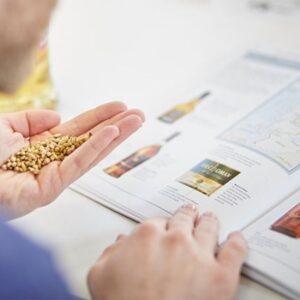Vodka, the iconic spirit of Eastern countries, is one of the most consumed and popular alcoholic beverages worldwide.
Its name, derived from the Russian word “voda” meaning “water”, evokes simplicity, strength, and purity. But beyond its reputation as a neutral drink, vodka is a fascinating product with many facets and a thousand-year-old history that deserves to be explored in-depth.
Behind its apparent simplicity, vodka hides a sophisticated production process and craftsmanship that has evolved over the centuries. It is the result of meticulous distillation, made from a variety of raw materials, and offers a wide range of flavors and textures.
But what is its history? How is it made? What are the different types of vodka? And most importantly, how can it be tasted to appreciate all its nuances?
In this article, we dive into the fascinating world of vodka, which we share in our WSET Spirits courses.
We will unveil its history, production methods, the different varieties you can explore, and provide tasting tips to fully appreciate this drink.
Whether you’re a connoisseur or a newcomer, this article will provide you with all the essential information to deepen your knowledge and savor vodka like an expert.
1. The History of Vodka: From Mysterious Origins to a Global Icon
Vodka has a fascinating history that dates back centuries.
Although Russia and Poland often dispute the origins of vodka, this spirit is deeply embedded in the cultures of Eastern Europe.
Let’s explore how vodka became a symbol of hospitality and an essential drink worldwide.
Its Origins: Russia or Poland?
The history of vodka is as murky as its clear appearance.
The first mentions of vodka date back to the 14th century, though the first distillations were likely even earlier. Vodka appeared in the regions of Poland and Russia, where it was initially used for medicinal purposes rather than for recreational drinking.
In its early days, vodka was considered a medicine. It was used to treat various ailments, such as body pains, infections, and even to heal wounds.
It wasn’t until the 18th century that vodka began to be consumed primarily as a social drink, evolving into what we know today.
Its Key Role in Russian and Polish Culture
Although vodka is now enjoyed worldwide, it remains deeply connected to Russian culture.
Russian vodka symbolizes hospitality and is omnipresent in the country’s traditions and ceremonies. In Russia, vodka consumption is often accompanied by specific rituals, such as toasts or sharing ceremonies among friends and family.
Polish vodka, on the other hand, is also a key element of local culture and is traditionally consumed during festivals or important celebrations.
Expansion to the International Stage: Vodka Becomes a Global Phenomenon
In the 20th century, vodka began to spread beyond the borders of Russia and Poland.
After World War II, its influence intensified, particularly in North America, where it was popularized by brands like Smirnoff.
Vodka quickly became the go-to spirit for cocktail creation, thanks to its neutral taste that allows it to mix seamlessly with a wide variety of ingredients.
Today, vodka is consumed worldwide, and the leading producers are Russia, Poland, Sweden, and France, competing for the top spot in vodka production and export.
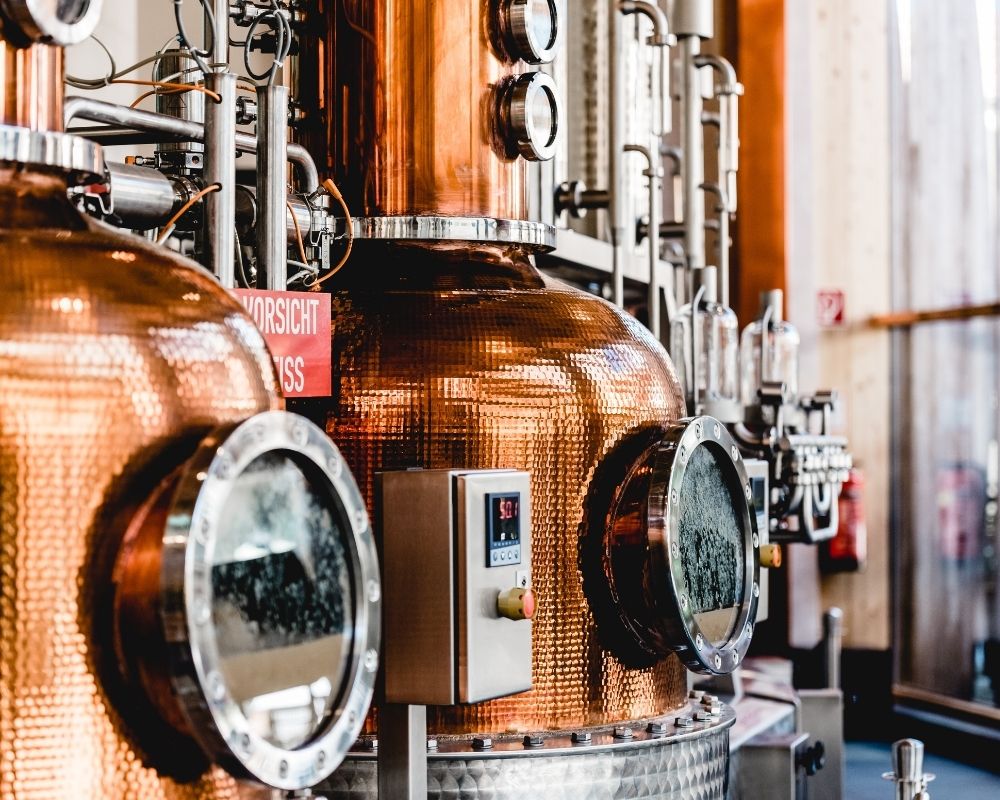
2. How is Vodka Made?
Vodka production is based on a precise and rigorous distillation process that transforms simple raw materials into a pure and potent spirit.
Despite its apparent simplicity, vodka requires technical know-how to achieve the purity and quality that make it such a beloved product.
Base Ingredients: Grains, Potatoes, and Sometimes Fruits
Vodka can be made from grains such as wheat, rye, barley, or even corn, or vegetables such as potatoes and beets.
More recently, some producers have started using fruits like grapes or apples to create more complex vodkas.
The choice of raw material influences the texture and smoothness of the vodka.
For example, wheat-based vodka is often softer, while potato-based vodka has a creamier texture and a richer mouthfeel.
Step 1: Fermentation
The first step in making vodka is fermentation.
The raw materials (grains, potatoes, or fruits) are crushed and mixed with water, then yeast is added to ferment the sugars present in the ingredients. This converts these sugars into alcohol.
This step produces a base alcohol called “mash” or “wash,” with a relatively low alcohol concentration (around 6-8%).
Step 2: Distillation
Distillation is the key step that concentrates the alcohol and purifies the vodka.
The mash is heated in a still, and the alcohol is separated from impurities (such as volatile compounds) through a process of heating and cooling.
- Continuous Distillation: This method allows for the production of a purer, more neutral vodka, ideal for mass production.
- Column Distillation: Column distillation results in an even purer alcohol, used for premium vodkas.
Vodka is typically distilled several times, usually between 3 and 5 times, to eliminate impurities and achieve a high-purity alcohol, often between 95% and 96% alcohol by volume (ABV).
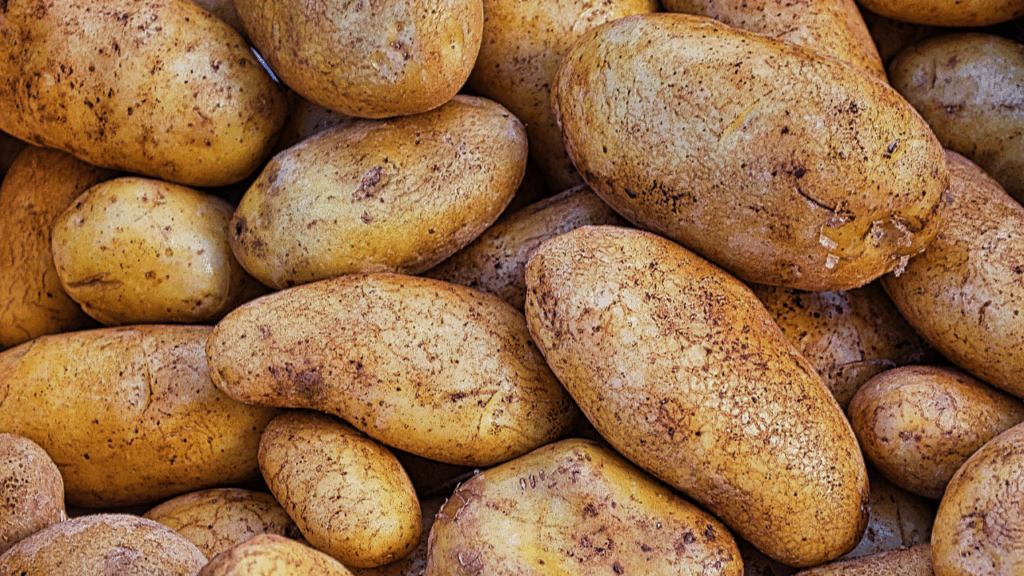
Step 3: Filtration
Once distilled, the vodka is filtered to remove the last impurities and refine its taste. Some producers use sophisticated filtration techniques, such as activated charcoal filtration or even filtration through precious stones (diamonds or quartz) to ensure an extra-pure vodka.
Premium vodkas may also undergo additional filtration with quartz sand or charcoal to remove any trace of undesirable flavors.
Step 4: Dilution
After distillation and filtration, vodka is extremely strong and needs to be diluted with water to reach the desired alcohol content.
It is typically served at 40% alcohol by volume (ABV), but some producers offer stronger versions, such as 50% ABVvodka or even super-premium vodkas with even higher concentrations.
The water used for dilution plays a crucial role in the final quality of the vodka.
Pure water, often sourced from natural springs or deep wells, is used to obtain a smoother and softer texture.
Step 5: Bottling
Once diluted, the vodka is bottled. Some producers choose to let the vodka rest for a few days or weeks after bottling to allow it to mature and balance. Once bottling is complete, the vodka is ready to be distributed.
The vodka-making process is a blend of science and art. Each step plays a crucial role in creating this refined and pure spirit. Whether made from grains, potatoes, or fruits, vodka offers a neutrality that allows its flavors to be adapted to a wide variety of cocktails, while also being ideal for pure consumption, especially in premium vodkas.

3. The Different Types of Vodka: Discover the Varieties
Vodka, although often perceived as a relatively neutral spirit, comes in a wide range of types and styles. From traditional, pure, and smooth vodka to flavored and premium versions, each variety has its unique characteristics.
1. Traditional Vodka: Purity and Neutrality
Traditional vodka embodies the very essence of the spirit.
Distilled multiple times to eliminate all impurities and achieve maximum purity, it is neutral, smooth, and easy to drink. Traditional vodka is ideal for cocktails due to its ability to mix perfectly with other ingredients without overpowering the flavors.
- Characteristics: Neutrality, lightness, smoothness.
- Use: Perfect for classic cocktails like Martinis, Bloody Marys, or Cosmopolitans.
2. Flavored Vodka: A Burst of Flavors
Increasingly popular, flavored vodka is infused with fruity, spicy, or herbal flavors, creating unique tasting experiences. The flavors can range from raspberry and lemon to more bold options like pepper or cucumber. This vodka is perfect for more complex cocktails, adding a new dimension to the taste.
- Characteristics: Variety of flavors, sweet or spicy notes, innovation.
- Examples of flavors: Raspberry, lemon, vanilla, pepper, cucumber, mint, etc.
- Use: Perfect for creative cocktails like the Lemon Drop Martini, Cucumber Cooler, or Cosmopolitan.
3. Luxury Vodka: The Pinnacle of Purity
Luxury vodka is made from the finest ingredients and undergoes highly advanced distillation and filtration processes. It is often aged and may be filtered with activated charcoal or even precious stones like diamonds to ensure an exceptionally smooth and soft vodka. Luxury vodka brands are renowned for their outstanding purity and high-end quality.
- Characteristics: Purity, smoothness, silky texture, refined taste.
- Examples of brands: Beluga, Grey Goose, Ciroc, Chopin.
- Use: Best enjoyed neat or in premium cocktails, such as the Vodka Martini or Moscow Mule.
4. Organic and Natural Vodka: Respecting the Environment and Flavors
Organic vodka is made from ingredients grown without pesticides or chemical fertilizers. Organic vodka producers focus on sustainable farming and production methods, using pure water and high-quality raw materials. This vodka often has more complex and earthy flavors, reflecting the respect for the terroir.
- Characteristics: More complex and natural flavors, eco-friendly, commitment to sustainable production.
- Examples of brands: Prairie Organic Vodka.
- Use: Perfect for those seeking an ethical vodka, ideal for drinking neat or in a simple cocktail.
5. Russian and Polish Vodka: Heritage Traditions
Russian and Polish vodka are classic variants of traditional vodka, made according to ancient recipes and techniques. Although Russia and Poland both claim to be the birthplace of vodka, both countries produce high-quality vodkas, often distilled multiple times with great attention to detail.
- Characteristics: Strong tradition, consistent quality, purity.
- Examples of brands: Russian Standard, Belvedere, Żubrówka (Polish vodka with bison grass flavor).
- Use: Best enjoyed neat, or in classic cocktails.
6. Cereal Vodka vs. Potato Vodka: What’s the Difference?
Vodka can be made from various raw materials, mainly grains (wheat, rye) or potatoes. The difference between the two lies mainly in the texture and smoothness of the spirit.
- Cereal Vodka: Generally lighter and smoother, with a softer texture.
- Potato Vodka: Richer, creamier, with a thicker mouthfeel.
Potato vodkas are often considered more complex and are prized for their round texture and sweetness.
If you want to learn more about other spirits, go to our blog posts about rum, whisky and tequila.
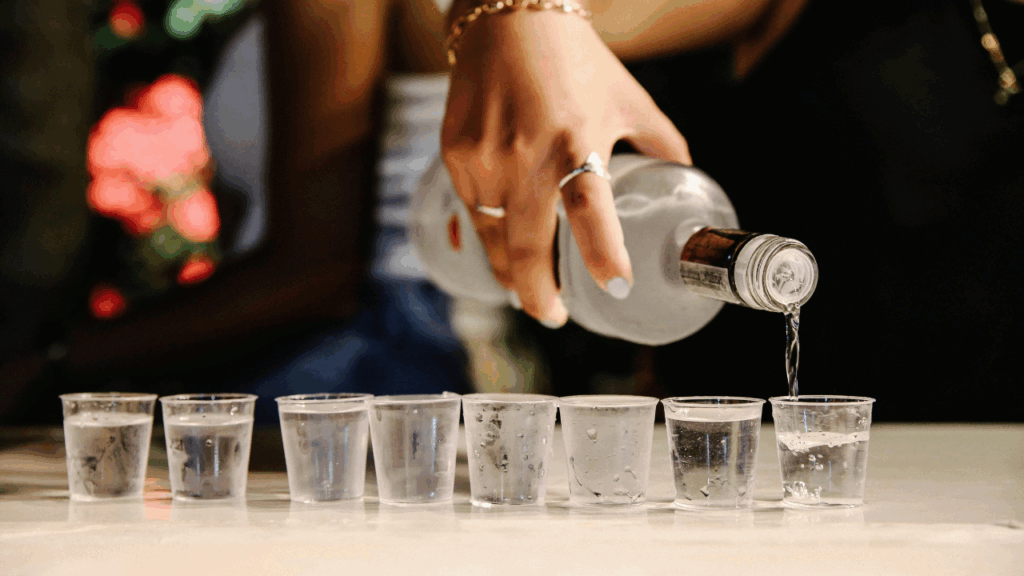
4. Tasting Vodka: How to Appreciate Its Flavors
Tasting vodka is often perceived as a simple activity, but it deserves special attention to appreciate all its subtleties. Unlike other spirits like whiskey or rum, which are often enjoyed for their complexity, vodka stands out for its purity and neutrality.
However, every vodka has its own unique flavors, textures, and nuances that deserve to be explored.
Here’s how to taste vodka like a professional and appreciate all its subtleties:
1. Serving Temperature: Essential to Reveal the Aromas
Unlike some spirits that are enjoyed at room temperature, vodka is typically consumed chilled, but not frozen. A temperature between 5°C and 10°C is ideal for revealing the smooth texture and aromas of vodka.
Why chilled? Serving vodka too warm can accentuate the alcohol, masking the more subtle aromas. Freshness allows you to better appreciate its purity and elegance.
Pro Tip: If you don’t have a freezer available, place the vodka in an ice bucket a few hours before the tasting to chill it.
2. The Glass Choice: Impact on the Tasting Experience
The type of glass used can influence the tasting experience. Unlike other spirits, vodka is ideally tasted in a tulip glass or a shot glass, but also in a small stemmed glass. These glasses help concentrate the aromas while promoting a more enjoyable tasting.
- Tulip Glass: This glass allows you to appreciate the aromas of the vodka while keeping it at the proper temperature. The narrowed shape helps concentrate the scents.
- Shot Glass: More commonly used for quick consumption but still suitable if you wish to savor vodka in a more relaxed way.
3. Observe the Vodka: A First Step Towards Appreciation
Vodka tasting begins with observation. Although vodka is generally clear and transparent, it’s still good practice to observe its texture, shine, and clarity before tasting. Here’s what to look for:
- Clarity: High-quality vodka should be completely transparent and free of impurities. Visible imperfections may indicate poor filtration or lower-quality distillation.
- Viscosity: Swirl the vodka in the glass and observe how it moves. Premium vodka often leaves tears or legs that form slowly along the sides of the glass.
4. Smell the Aromas: Nose Plays a Key Role
The sense of smell plays a crucial role in tasting vodka, as about 80% of the flavors we experience come from our nose. Vodka is often appreciated for its purity, but subtle aroma notes can still be discerned. Here’s how to proceed:
- First Inhalation: Take a light sniff, without sticking your nose too deeply into the glass to avoid overpowering the aromas with alcohol.
- Second Inhalation: After swirling the vodka in the glass, a deeper inhalation will reveal more complex aromas, such as herbal, mineral, or citrus notes.
You can also use the WSET Spirits SAT sheets to assist you in identifying the aromas and flavors during the vodka tasting.
5. Taste the Vodka: Appreciate the Texture and Flavors
Once the aromas are explored, it’s time to taste the vodka. Unlike other spirits, the goal of vodka tasting is to appreciate both its texture and its purity. Take a small sip and let the vodka unfold in your mouth.
- Texture: The vodka should be smooth, velvety, and creamy. Some vodkas may have a more “dry” or airy texture, while others may feel rounder.
- Flavors: A high-quality vodka will have a neutral flavor, with subtle notes of grains or fresh fruits. Premium vodkas may also present mineral undertones or hints of white flowers.
- Aftertaste: The aftertaste of vodka should be short and clean, with no bitterness or excessive burning sensation.
6. Tasting Vodka in Cocktails: Elevating the Drink
If you prefer vodka in cocktails, it’s essential to choose the right vodka based on the other ingredients to create harmonious combinations. Vodka is often used for its ability to blend with other flavors without overpowering them.
- Classic Cocktail: A Vodka Martini or Moscow Mule is a perfect example where vodka is the main ingredient, providing a clean and smooth base for the other flavors.
- Fruity Cocktail: Vodka also pairs well with fresh fruits, herbs like basil or mint, or sweeter ingredients.
For a deeper dive into vodka tasting and the world of spirits, our WSET Spirits courses will guide you to professional expertise, helping you understand the finer details of vodka and other spirits.
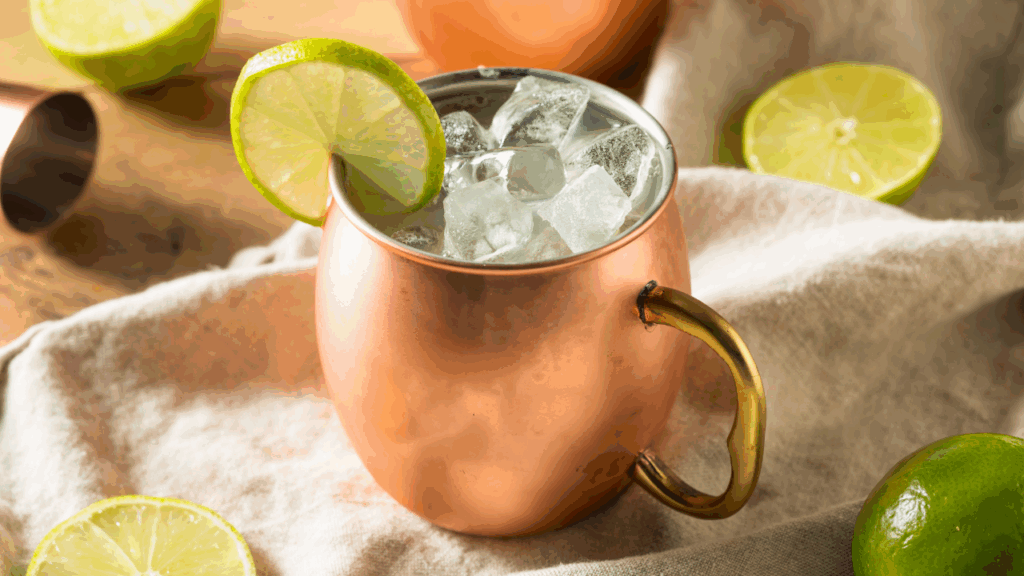
5. Food Pairings & Great Vodka Cocktails: Elevating Vodka with Flavors
Vodka, with its neutrality and purity, is particularly suited to pairing with various dishes and cocktails. While often used in classic cocktails or as a base for modern drinks, vodka can also be paired with food to offer a complete culinary experience.
Discover how to pair vodka with savory dishes and the best vodka-based cocktails for a perfect tasting experience:
1. Food Pairings and Vodka: A Subtle Match
Unlike other spirits, vodka can pair with a wide range of dishes without overwhelming the flavors.
Here are some pairing ideas:
- Vodka and Caviar: One of the most classic pairings, vodka pairs perfectly with caviar. The purity of the vodka enhances the delicate, salty flavors of the caviar, offering a balance between the vodka’s smoothness and the richness of the caviar.
- Smoked Fish and Vodka: Smoked fish, such as salmon, herring, or halibut, pairs wonderfully with vodka. The vodka’s light acidity and mineral notes balance the richness of the smoked fish.
- Fresh Cheeses: Soft cheeses like brie, camembert, or fresh goat cheese complement vodka beautifully. The creamy texture of the cheeses pairs well with the smoothness and purity of the vodka.
- Asian Cuisine: Dishes such as sushi, raw fish, or spicy meals (like Thai or Indian food) also pair excellently with vodka. Vodka provides a refreshing and light element that balances the spicy flavors and complex aromas of these dishes.
2. Classic & Modern Vodka Cocktails: The Best Vodka Mixes
Vodka is a versatile base for a wide variety of classic and modern cocktails.
Here are some of the most popular cocktails you can make with vodka:
- Vodka Martini: The iconic cocktail, often associated with James Bond, combines vodka and vermouth. This cocktail is simple yet sophisticated, highlighting the purity of vodka. For a modern twist, you can pair it with lemon zest or olives.
Recipe: 50 ml vodka, 10 ml dry vermouth, ice, olive or lemon zest. - Moscow Mule: This refreshing and fizzy cocktail mixes vodka with ginger beer and lemon juice in a copper mug, creating the perfect balance between tangy and spicy flavors. It’s a popular choice for those who enjoy a refreshing drink.
Recipe: 50 ml vodka, 100 ml ginger beer, 10 ml fresh lemon juice, ice, lemon wedge, mint for garnish. - Bloody Mary: This vodka-based cocktail is a brunch favorite. It combines vodka with tomato juice, lemon, Tabasco sauce, celery salt, and spices, creating a savory and spicy drink.
Recipe: 50 ml vodka, 100 ml tomato juice, 10 ml lemon juice, a few drops of Tabasco sauce, celery salt, pepper, garnish (celery, olives, lemon). - Cosmopolitan: A chic and elegant cocktail, the Cosmopolitan combines vodka, triple sec, cranberry juice, and lime juice, creating a tangy and fruity drink. Perfect for a stylish evening.
Recipe: 40 ml vodka, 15 ml triple sec, 15 ml cranberry juice, 10 ml lime juice, ice, lemon slice for garnish. - Lemon Drop Martini: For those who prefer a sweeter and tangier drink, the Lemon Drop Martini is a great option. With vodka, sugar, lemon syrup, and a touch of lemonade, this cocktail is both sweet and refreshing.
Recipe: 50 ml vodka, 20 ml lemon syrup, 10 ml sugar, ice, lemon slice for garnish.
3. Create Your Own Vodka Cocktails
One of vodka’s greatest strengths is its ability to blend with almost any ingredient, allowing for great creativity in cocktail preparation. Whether you prefer fruity, herby, or even spicy cocktails, you can personalize vodka to suit your tastes.
Here are some suggestions:
- Vodka and Fresh Fruits: Mix vodka with fresh fruits like raspberry, melon, mango, or pineapple for tropical and sweet cocktails.
- Vodka and Fresh Herbs: Add mint, basil, or coriander to your vodka for fresher, herbaceous cocktails.
- Vodka and Spices: If you enjoy spicy flavors, try adding ginger, black pepper, or even chili to your cocktail for a spicy kick.

Vodka: A Spirit to Discover in All Its Dimensions
Vodka, with its purity and neutrality, is much more than just a base spirit for cocktails. Whether it’s its fascinating history, meticulous production, numerous variations, or its food and drink pairings, this spirit offers a unique tasting experience that deserves to be explored.
If you want to go further in your exploration of vodka and other spirits, Weeno offers comprehensive, professional WSET Spirits courses.
Sign up now for our next WSET Spirits course session and join a community of enthusiasts who discover, understand, and master the art of spirit tasting.





